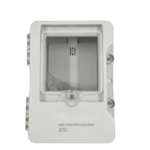The low-voltage grid that powers our homes and businesses is a modern marvel of engineering.Yet behind its simple wall outlets lies a complex system designed to maintain steady and reliable electricity delivery.A key part of this is regulating voltage within acceptable limits through various control mechanisms.This article will provide an in-depth look at how voltage is managed on the grid and why steady voltage is so important for power quality and equipment protection.
What is Voltage?
To understand voltage regulation, we first need to cover some basics. Voltage is the electrical “pressure” that causes current to flow through wires, similar to how water pressure pushes water through pipes. Standard wall outlets in many parts of the world provide 230 Volts of electric potential energy.This forces electrons to move and allows electrical power to be transferred to appliances and devices connected to the grid.Without this consistent voltage source, modern conveniences like lighting, motors, and electronics would not function properly.
Nominal vs Actual Voltage Levels
While we refer to a 230 V grid, the actual voltage at wall outlets fluctuates above and below this nominal level.Most countries accept a range of 216 to 253 Volts (230 V +/-10%) as within normal standards.In the European Union, normal voltage must be between 207 to 253 Volts for at least 95% of the time over a week.
How Grid Voltage is Regulated
To minimize harmful voltage fluctuations, multiple techniques are used to actively and passively regulate the low-voltage grid.These controls work together to maintain steady voltage during both normal and emergency conditions.
Generator and Transformer Controls
The first line of regulation occurs at power stations and substations. Generators converting mechanical energy into electricity are designed to output set voltages and compensate for changing loads.Special automatic voltage regulator (AVR) systems quickly adjust generator field current to maintain the desired terminal voltage.
Capacitors and Reactors
Along power lines, passive capacitors and reactors help smooth voltage variations.Capacitors store and release energy as needed to boost sagging voltage.Reactors limit surges by providing more reactance and absorbing excess voltage spikes.These simple devices provide continuous “self-regulation” without active controls.Strategically placed, they can remediate localized voltage issues and enhance stability across the grid.
Smart Grid Technologies
Modern smart grid infrastructure allows even finer real-time voltage control.Sensors provide voltage data at many points across the network. Automation systems analyse this and optimize voltage by adjusting transformer taps, switching capacitors/reactors, or inserting dynamic voltage restorers.When coupled with real-time load monitoring, smart grid technology can predict voltage changes and act preventatively.It also allows more decentralized and rapid voltage regulation in response to disturbances.
Protective Equipment
If preventive regulation fails, protective devices act as the last line of defence.Relays detect and quickly disconnect circuits experiencing sustained over/undervoltage or voltage spikes.Surge arrestors and suppressors clamp or divert transients to protect equipment. Uninterruptible power supplies (UPS) bridge very brief outages or sag, while voltage regulators filter harmonics and anomalies.This protective gear minimizes damage when voltage escapes ideal bounds.
Emergency Load Shedding
During a major grid disturbance, emergency controls may deliberately drop entire sections of load to prevent voltage collapse.Shedding or reducing load rebalances supply and demand and helps stabilize system voltage. While disruptive, it is preferable to tripping generators or allowing voltage to drop precipitously.Careful planning ensures critical users remain powered while shedding rotates through less essential networks.
Takeaway
Steady and reliable electricity is fundamental to safety, productivity and quality of life.By proactively managing voltage within mandated levels, utilities deliver consistent power quality to customers. Tight regulation reduces flickering lights, equipment damage, and unexpected shutdowns that disrupt homes and businesses.It also prevents safety issues from under/overvoltage.Investing in regulation ultimately pays off through greater grid resilience,longevity of electrical infrastructure, and satisfied consumers.
Voltage control technology continues advancing to meet stricter standards and the needs of modern electricity grids.However, achieving robust voltage regulation remains a complex balancing act.Utilities must monitor demand trends, maintain real-time situational awareness, predict voltage changes, and respond across large interconnected systems.Voltage regulation is a key focus of grid modernization efforts worldwide.As electricity becomes even more central to our lives, maintaining steady and safe voltage will only grow in importance.



